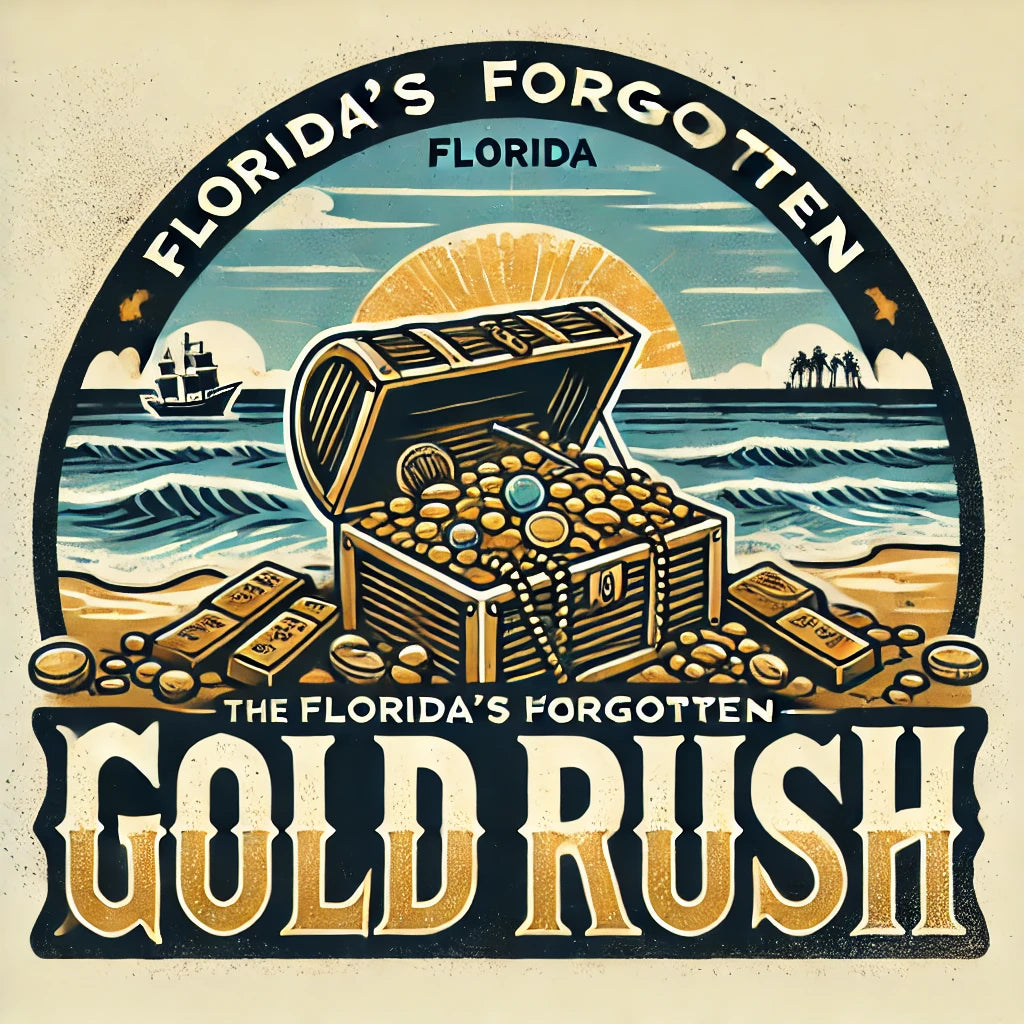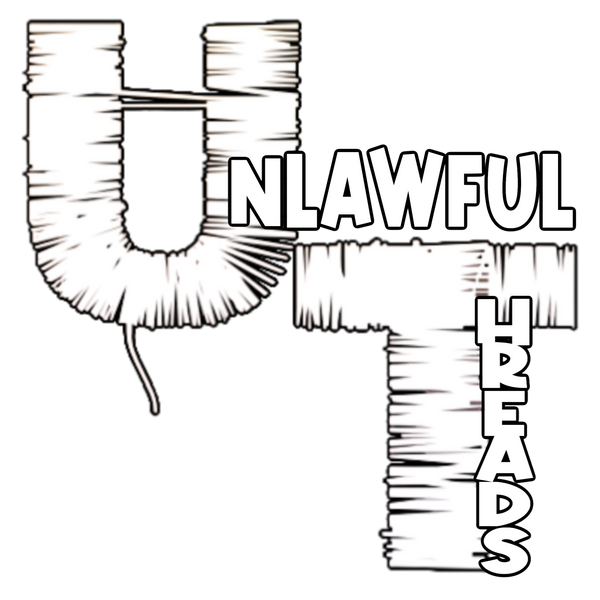
The Wild History of Florida’s Forgotten Gold Rush
Share
1️⃣ Gold Fever Hits the Sunshine State
When you picture a gold rush, you probably imagine scruffy miners swinging pickaxes in the Rocky Mountains. But Florida's gold rush looked a whole lot different. Instead of panning for gold in rivers, Florida’s fortune seekers searched the ocean floor and coastal beaches for sunken treasure.
Unlike California’s gold rush of 1849, Florida’s “gold rush” was driven by something even older — the treasure-laden ships of the Spanish fleet. From the early 1500s to the 1800s, Spain used Florida’s coast as a vital shipping route to transport gold, silver, and jewels from the New World back to Europe. But not every ship made it home.
Hurricanes. Pirates. Mutiny. All three played a role in sending countless Spanish treasure ships to the bottom of the sea. Some wrecks were found almost immediately, but others remained lost for centuries — and that’s where Florida’s “gold rush” begins.
If you want to learn more about the history of Spanish treasure fleets, check out the Mel Fisher Maritime Museum’s collection here.
2️⃣ The Shipwreck That Sparked It All
While shipwrecks had been a fact of life on Florida’s coast for centuries, it wasn’t until July 1715 that things got really interesting. That’s when an entire fleet of Spanish treasure ships, known as the 1715 Treasure Fleet, was caught in a hurricane and wrecked along Florida’s Atlantic coast.
Imagine this: Ten ships carrying literal tons of gold, silver, and jewels smashed into the reef system just offshore, scattering their riches along the beaches from Sebastian Inlet to Fort Pierce. It was a disaster for Spain, but for modern-day treasure hunters, it was an absolute jackpot.
Word of the wreck spread fast, and by the mid-1900s, the area was crawling with treasure seekers. Mel Fisher, one of the most famous treasure hunters in history, spent decades searching for the lost fleet. His persistence paid off when he discovered the legendary shipwreck of the Nuestra Señora de Atocha off the coast of Key West.

To this day, people continue to hunt for treasure along Florida’s Treasure Coast. Modern metal detectors have replaced pickaxes, but the thrill of the hunt is just as strong. For tips on how to start your own treasure hunt, visit the Florida Metal Detecting Club here.
3️⃣ Who Were the Treasure Hunters?
Florida’s gold rush didn’t attract prospectors from the mountains — it attracted a whole different breed of fortune hunter.
Here’s who showed up to claim their share of the loot:
- Local Fishermen – While casting nets, fishermen would accidentally snag pieces of treasure. Some of them turned into full-time treasure hunters.
- Adventurous Tourists – Florida’s beaches became hot spots for amateur treasure seekers. Some came with metal detectors, while others simply strolled along the beach hoping to spot a gold coin.
- Professional Salvors – These are the heavy hitters, often equipped with dive teams, high-tech sonar, and million-dollar salvage ships. They’re on a whole different level of treasure hunting.
- The Florida Man (Yes, He’s Here Too) – Every so often, news breaks of a random beachgoer finding a gold coin worth thousands while walking his dog. It's classic Florida luck.
One of the biggest treasure hunting groups is Treasure Salvors, Inc., which was founded by Mel Fisher. The company’s most famous find was the Atocha, yielding gold and silver worth over $400 million. Check out the full story of the Atocha treasure at the Mel Fisher Maritime Museum here.
4️⃣ Legendary Finds That Shocked the World
Treasure hunting isn’t all digging holes and broken dreams. Some people actually strike gold. Here are some of Florida's most legendary finds:
💰 The Atocha Haul
- Who Found It? Mel Fisher
- Where? Off the coast of Key West
- What Was Found? Over $400 million in gold, silver, and jewels, including gold bars, coins, and emeralds.
💰 The Gold Chalice of 1715
- Who Found It? Local beachcomber (his name was never revealed)
- Where? Near Vero Beach
- What Was Found? A 17th-century gold chalice believed to have been lost from the 1715 Treasure Fleet.
💰 Gold Coins on the Beach
- Who Found It? Random beachgoers
- Where? Multiple places along Florida's Treasure Coast
- What Was Found? Spanish gold doubloons are still being found today. People walking their dogs or metal detecting for fun often stumble across them after big storms.
5️⃣ Can You Hunt for Gold in Florida Today?

Yes, you can! Florida's coast, especially the Treasure Coast, remains one of the best places to hunt for sunken treasure. But there are rules you’ll need to follow.
Here’s how to do it right:
- Stick to Public Beaches – Hunting for treasure on private property could land you in legal trouble.
- Get a Metal Detector – Beachcombers with detectors are more likely to find treasure than those relying on luck alone.
- Check the Law – Salvage rights exist for certain areas, and specific companies (like Treasure Salvors, Inc.) may have exclusive rights to certain wreck sites.
- Go After a Storm – Big storms churn up the ocean floor, bringing fresh treasures to the surface.

If you want to get started with metal detecting, check out the Florida Metal Detecting Club here.
6️⃣ The Legacy of Florida’s Forgotten Gold Rush
Most people associate gold rushes with California or Alaska, but Florida’s gold rush is still alive and well. From the 1715 Treasure Fleet to modern-day treasure hunts, the Sunshine State’s shores are full of untold riches.
Even if you never find a gold coin on the beach, you can still experience the thrill of the hunt. Whether you’re scanning the sand with a metal detector or wandering the beaches at low tide, the possibility of striking gold is enough to keep treasure hunters coming back.
Call-to-Action (CTA)
Have you ever found a gold coin or a piece of treasure on the beach? Tell us your story in the comments! If you want to try your luck, head to Florida’s Treasure Coast and see if fortune favors you. If you're ready to plan a treasure-hunting adventure, check out Visit Florida's Treasure Coast Guide here.
Sources & Backlinks
- Mel Fisher Maritime Museum – Learn about the history of the 1715 Treasure Fleet and the Atocha find here.
- Florida Metal Detecting Club – Tips, rules, and guides for detecting in Florida here.
- Visit Florida’s Treasure Coast Guide – Plan your trip to Florida’s Treasure Coast here.

